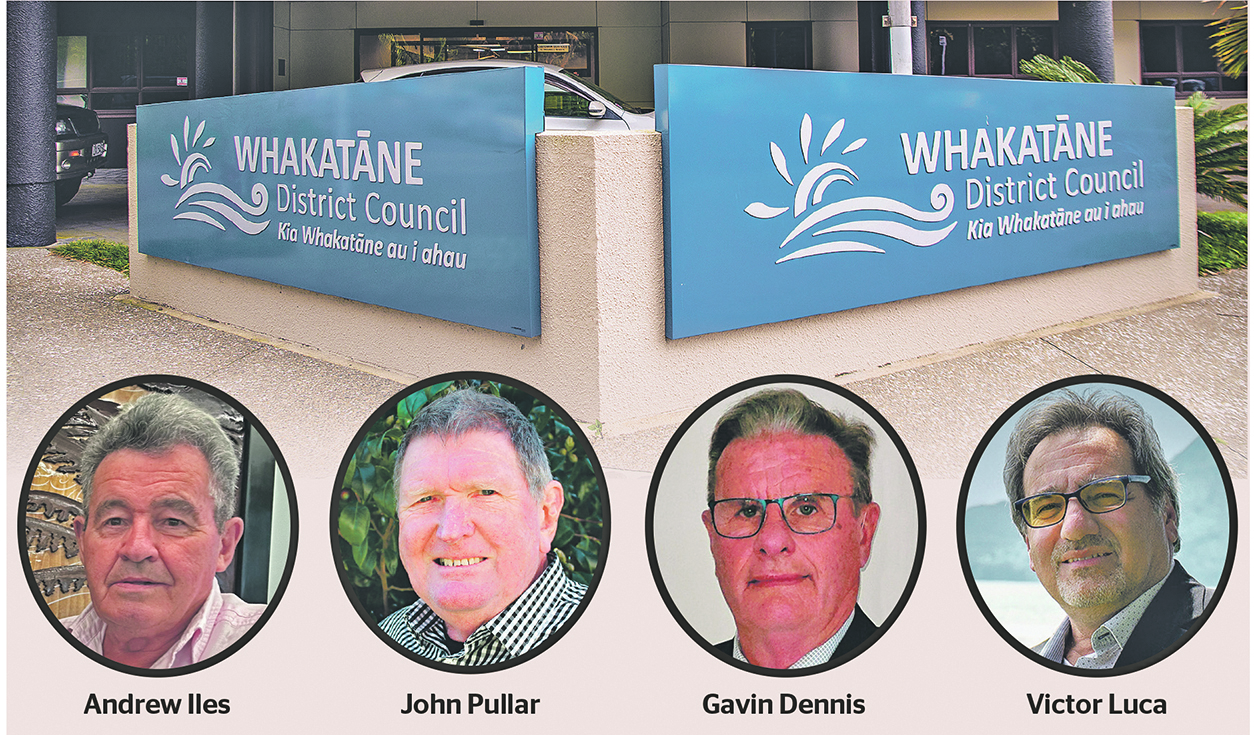Council commits to 11.7 percent rates increase

Diane McCarthy
Balance and compromise were words often repeated as Whakatāne District Council adopted its draft annual plan budget for 2025-2026 yesterday.
Despite varying opinions around the table about whether the average rate rise should be higher or lower than the 11.7 percent proposed by the draft budget, most elected members agreed to compromise by accepting the figure, which was 1 percent lower than the 12.7 percent increase proposed for year two of the long-term plan.
Only two councillors voted against it, councillors Andrew Iles and John Pullar, though for different reasons.
Senior strategic policy analyst Harvey Keravel reiterated what the council was told in December, that some savings had been identified, which were the equivalent of a 2.2 percent rates increase.
“Savings came from four areas – decreased inflation and interest rates, removal of FTE (Full time equivalent employees) some deferred transport work and other line-by-line savings.”
Though members disagreed about how these savings be allocated, the majority had previously provided guidance to staff to split the savings, with 1 percent allocated to reduce the proposed rates increase to 11.7 percent.
The rest of the savings were to be allocated to reduce the council’s $14 million operating deficit.
Mr Iles wished to use more of the savings to reduce rates further.
He responded to finance general manager Bevan Gray’s comparison to a household paying off their mortgage faster to reduce future interest costs.
“Unfortunately, a lot of households aren’t in that position. Since we have set this rate, if anything, the economic climate has got worse for a lot of those families,” Mr Iles said.
“It’s nice to reduce our debt internally, but it’s at the expense of some of these households, which are really going to struggle to find this additional rate increase.
“We have to try and consider the whole of the district’s circumstances, whether they be old-age pensioners on fixed incomes, or young families struggling to get food on the table.”
Mr Pullar said the council should stick to the 12.7 percent rates rise agreed in the long-term plan.
“What we’ve got to remember is that whenever we put stuff off to save a percent, the cost, when we come to do the work, is probably 10 times that much.
He said finding savings of 1 percent now belied the council’s credibility.
“Because in the future, we’re going to set a rate and people are going to say, ‘oh but you can reduce it’.
“We hear about people who can’t buy milk and can’t do this and can’t do that. I wonder how many people we’re talking about. We’ve got 40,000 people in this area, roughly. Are we going to cane 38,000 of them because we’re trying to look after 1000 of them.”
Councillor Gavin Dennis said he would have preferred to take rates’ rises down to 10.7 percent but understood the necessity for compromise.
“I believe that there are a lot more than 2000 people struggling at the moment. However, I have seen the huge effort that staff have gone to, not only to reduce the timeline of the debt, which I applaud them for, because that will free up more money in the future. I also applaud them for finding the savings that they did.
“Reluctantly, I have to agree there is a balance to what Councillor Pullar said, that we can’t kick it too far down the track.”
The remaining councillors also agreed to compromise, despite some wishing for lower rates’ rises and others wanting to reduce debt further.
Mayor Victor Luca said there had been a lot of debate that had led to them arriving at the budget they had and though he was not happy with the rates’ increase, he thought the council had landed where most elected members were in favour.
“It’s a process that, invariably, nobody ends up being satisfied with.
“There are trade-offs and compromises that need to be made.
“We’d all like to have no rates increases. We’d all like to have no debt and we’d all like to have no reduction in services as well, but those things are all in tension and you just can’t have everything.”
